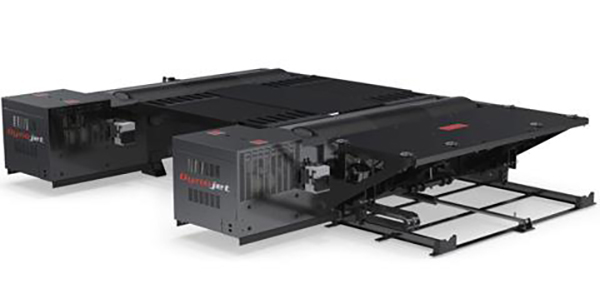The Specialty Equipment Market Association (SEMA) welcomes the installation of a new water well and weather and hydrologic equipment used for measuring salt growth conditions as part of its broader Restore Bonneville program. Federal and state funds were released last year to install the monitoring equipment and help increase the volume of salt pumped onto the Bonneville Salt Flats this year to a total of up to 500,000 tons.
As part of the Restore Bonneville program, SEMA and the racing community joined forces with the U.S. Bureau of Land Management (BLM), Utah Department of Natural Resources (DNR), Utah Geological Survey (UGS), and Intrepid Potash Inc. in the collaborative restoration effort. Originally in the 1960s, the racing venue was over 13 miles in length, but the course is now eight miles or less. According to a study by the BLM, the Salt Flats have also shrunk in size from 96,000 acres to about 30,000 acres.
Located in northwestern Utah, the Bonneville Salt Flats are composed of densely packed salt remnants of an ancient lakebed formed over thousands of years. They serve as a unique stage set for movies, commercials, marathons, and rocket club launches, and possess rare physical qualities that make it the perfect venue for land speed racing, such as providing a cool surface that doesn’t overheat tires. Since 1914, hundreds of land speed records have been set and broken in a variety of automotive and motorcycle classes. Speed Week, the marquee event at Bonneville, began in 1949, with scores of racers and thousands of spectators descending on Bonneville in the quest for records.
Bonneville serves another important role as a crucial natural resource for potash used primarily in fertilizers. To obtain potash, salt brine is collected in large solar evaporation ponds, from which potash is separated out and processed. The remaining salt is stored and may then be returned to the Salt Flats as salt brine.
Beginning in the 1960s, the BLM issued leases to the north of Interstate 80, where motorsports racing and other recreational activities take place, allowing salt brine to be collected in open ditches for commercial potash processing. The mine operator began pumping the processed salt back onto Bonneville in 1997 as a result of a pilot project SEMA advocated to create. The Restore Bonneville program will help address salt losses that occurred before 1997, when the potash project was operated by previous companies.
The BLM and DNR signed a Memorandum of Understanding in April 2020 to jointly pursue restoration efforts. The program, which SEMA calls Restore Bonneville, will be managed by DNR, in conjunction with the BLM, and operated by Intrepid Potash. The endeavor is strongly supported by SEMA and the Save the Salt Coalition, a collection of companies, organizations, individuals, and land speed racing teams.
In working with Intrepid Potash, the volume of salt laid down on Bonneville will be increased by updating and improving the efficiency of the current pumping infrastructure and water conservation efforts, which includes rebuilding water wells, covering ditches, and installing new pipes and pumps. Great efforts to use water more efficiently will help achieve the goal to increase the volume of salt returned to the salt flats. It will likely take several years to upgrade the infrastructure and gradually increase pumping volumes.
The summer 2021 installation of the new water well and equipment to measure water evaporation rates and collect scientific data represented a tangible start to the ambitious restoration effort. The program will seek to identify the best ways to take advantage of the salt laydown and study the effects on the salt crust and underlying brine aquifer. For example, the program will consider ways to contain the salt within the large pumping area. If current research proves beneficial, efforts may be extended into the future upon funding availability.
Stakeholders are now identifying projects to be pursued in 2022 and beyond to continue increasing the volume of salt being pumped. While the bulk of the program funding will come from federal and state appropriations, both industry and the land speed racing community will voluntarily help pay the costs. Financial contributions from the racing community are gratefully accepted at www.savethesalt.org, a 501(c)(3) organization.

